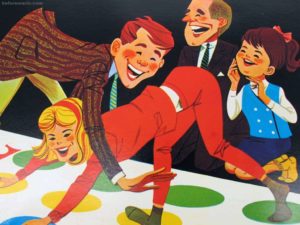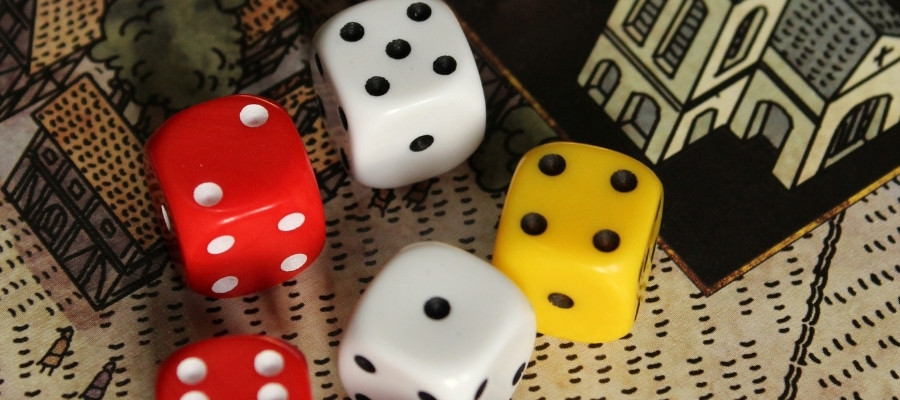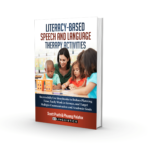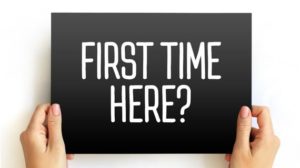“Speech Therapists Just Play Games!”

Why are Language Therapy Games Effective?
Games and play create a perfect storm of some of the highest levels of engagement, open minds, motivation to remember through competition, and just plain fun. What is lacking is research showing how structured language therapy games can be an effective way to solidify your communication gains. Justifying what we do is only a tiny part of it. Storybooks generally fall into eight narrative categories that make their outcome “predictable” in certain ways.
By learning about these eight types of predictable books, we can generate board games that match the narrative structure. If a child learns (or makes) a game, a child learns the structure. Boom! Try to pull that off with other therapeutic techniques!
– Mary Jett Simpson, in Reading Resource Book
– www.educationoasis.com
What are Predictable Books?
Predictable books have structured patterns so that a reader can anticipate upcoming story events. They employ repetitive lines, plots, refrains, rhythm, or phrases. The books for younger children contain visuals to help tell the story.
Why Are Predictable Books Important?
If the idea of predictable books is new to you, you are in for a real treat. One of the best ways to increase a child’s participation (without relying on his or her ability to demonstrate reading fluency and comprehension), is to select a book that has repetition and predictability. Predictable books have been a hot topic with educators, librarians, and literacy coaches for many years, and for good reasons. Here are just a few of the benefits of predictable books:
High level of participation:
The familiarity that the stories generate, the rhyming, and the repetitive nature encourages children to take an active role in the story-telling rather than simply listening.
Pre-reading skills
Predictable books introduce the most common grammatical constructs and also compare and contrast sounds with rhyming words. The quick pace of several of the book types teaches how to progress through a book from top to bottom, left to right, and page to page.
Natural inflection
The natural inflection that we use in daily conversation is conveyed through the story-telling of predictable books. Because of the high level of repetition, children have an opportunity to practice and play with the nuances of language.
Narrative structure
Predictable books introduce the most common and basic story structures which are the foundation for understanding plot and story-writing in the older grades.
Utterance expansion
The repetitive nature of predictable books and the rhyme schemes enable a child to produce longer utterances than they would normally use. This is extremely important for children with expressive language impairments and phonological delays who typically produce communication that is short, relative to their age. Predictable books create a framework to explore and practice longer words and utterances.
Types of Predictable Books
There are eight different types of predictable books. We can use these eight groups to categorize the books we read and get a better understanding of what each book has to offer. These predictable categories also enable us to better define WHY our favorite books for speech therapy are successful, thus helping identify other book titles for future sessions. Click on each story type to read more about each type of predictable books.
- Chain or Circular Story: The story’s ending leads back to the beginning. Example: Where the Wild Things Are
- Cumulative Story: The story builds on a pattern. It starts with one person, place, thing, or event. Each time a new person, place, thing, or event is shown, all the previous ones are repeated. Example: There was an Old Lady Who Swallowed a Fly
- Familiar Sequence Story: A common, recognizable theme such as the days of the week, the months, etc. Example: Today is Monday
- Pattern Story: The scenes or episodes are repeated with a variation. Example: Froggy Gets Dressed
- Question and Answer Book: A question is repeated throughout the story. Example: Brown Bear, Brown Bear
- Repetition of Phrase Book: A phrase or sentence is repeated. Example: Goodnight Moon
- Rhyme Book: A rhyme, refrain, or rhythm is repeated throughout the story. Example: Chicka Chicka Boom Boom
- Song Book: Familiar songs with repeated phrases, sentences, rhymes, or refrains. Example: Five Little Monkeys
Note that predictable themes are easier to identify with books written for younger children. We often see more overlap of characteristics in different types of predictable books in stories written for older children, as they contain more story elements.
For loads more information about fun intervention strategies that incorporate books, be sure to check out our book, Literacy-Based Speech and Language Activities.






